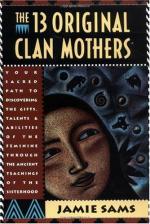|
This section contains 706 words (approx. 3 pages at 300 words per page) |

|
The Frontier.
Medicine in early America was random, diverse, and unspecialized. University-trained medical practitioners were rare in the colonies. Most doctors were surgeons, apothecaries, or barbers educated under the apprenticeship system. They could prescribe herbal remedies, pull teeth, lance a boil, and bleed or purge a patient. But they were helpless when faced with serious illnesses such as typhoid fever, smallpox, or dysentery. Often both doctor and patient relied on home remedies learned from Indians. The feverish patient seeking relief sometimes followed the Indian example of steam baths. Louis Hennepin treated one of his fellow priests with a potion made of the herb hyacinth. He noted that the Native Americans cured the fever of malaria with a medicine contrived by boiling cinchona bark, which contained quinine. He approved of the European practice of sometimes bleeding patients to relieve pain.
House Calls.
Historian William Smith in...
|
This section contains 706 words (approx. 3 pages at 300 words per page) |

|




